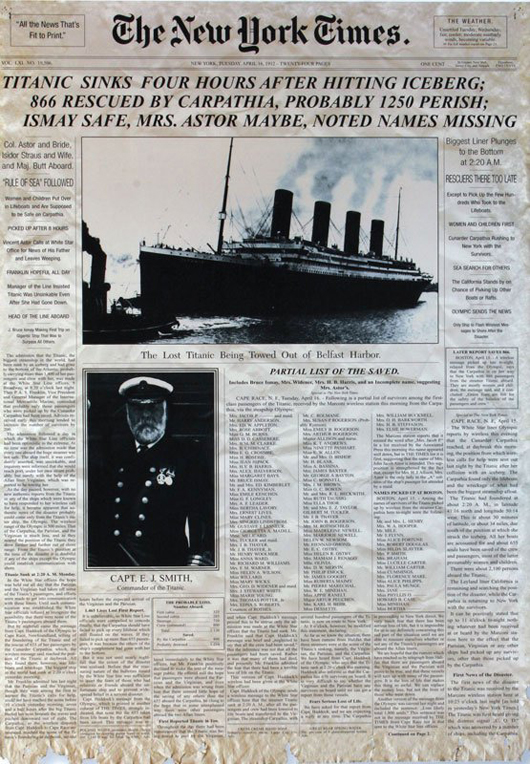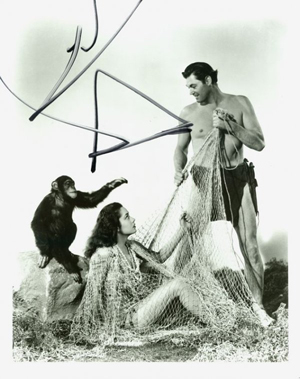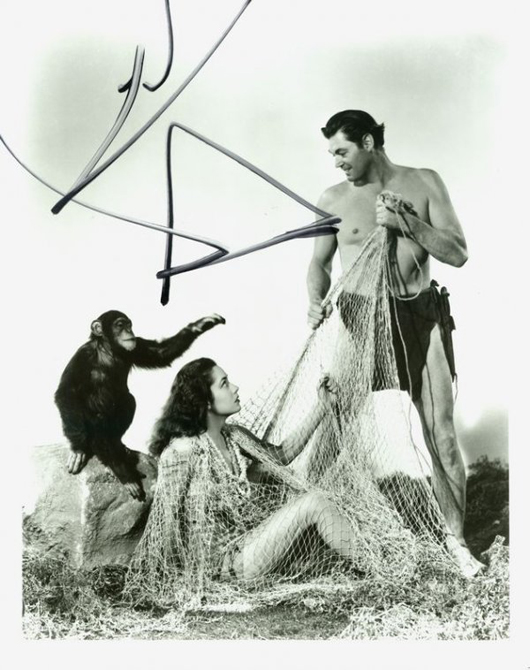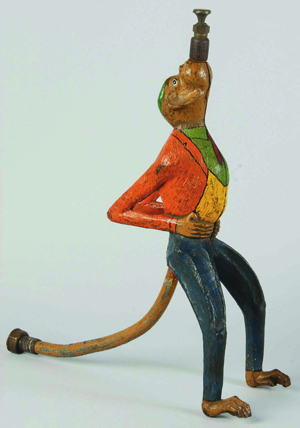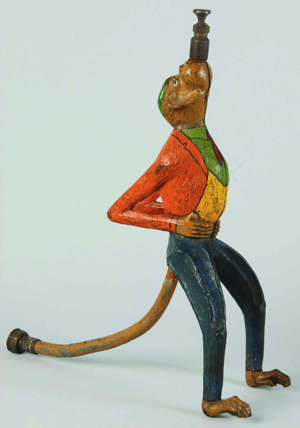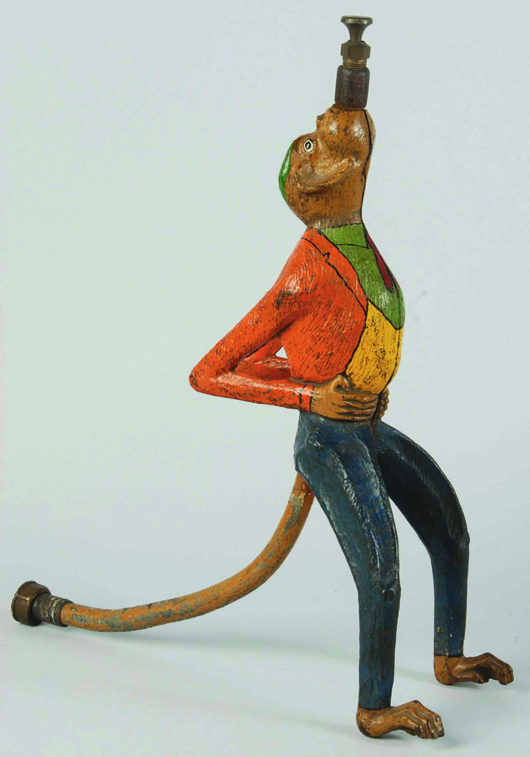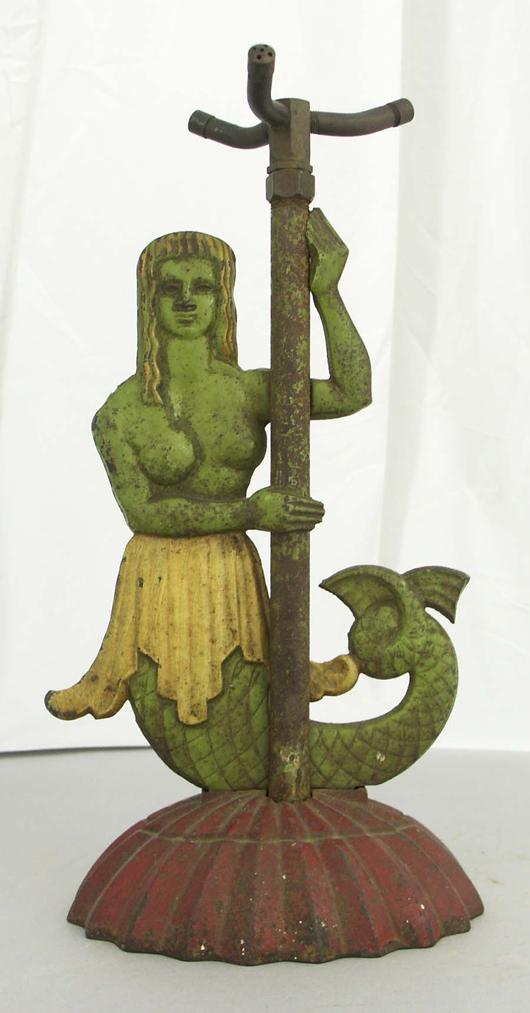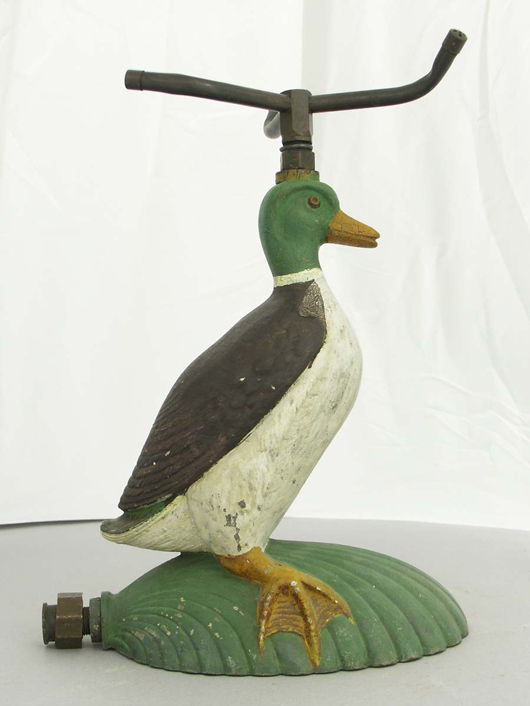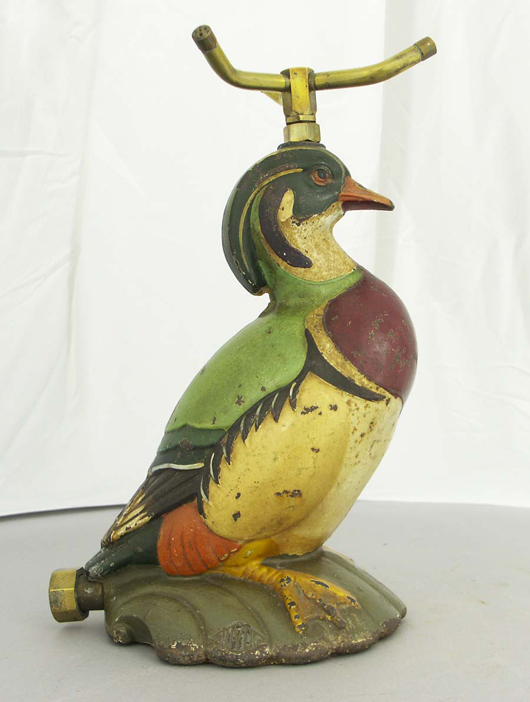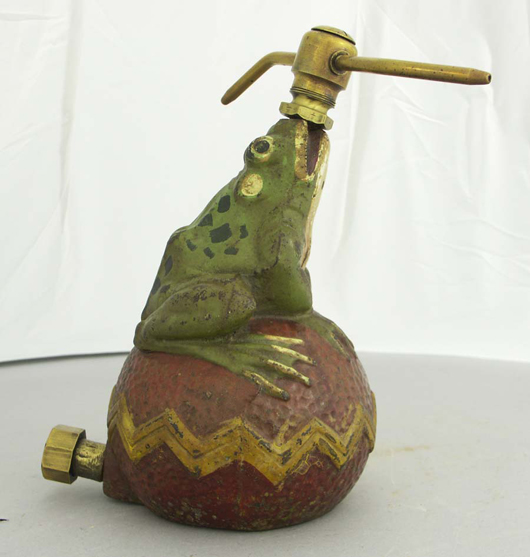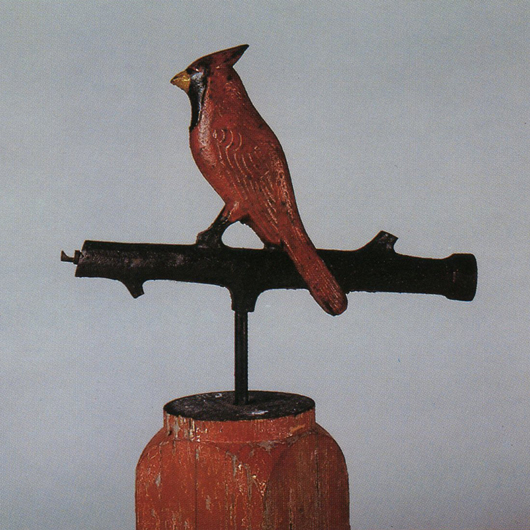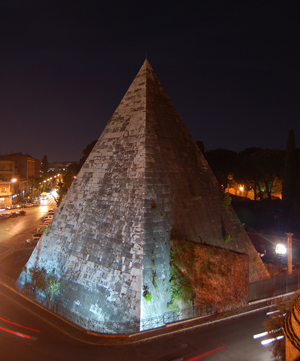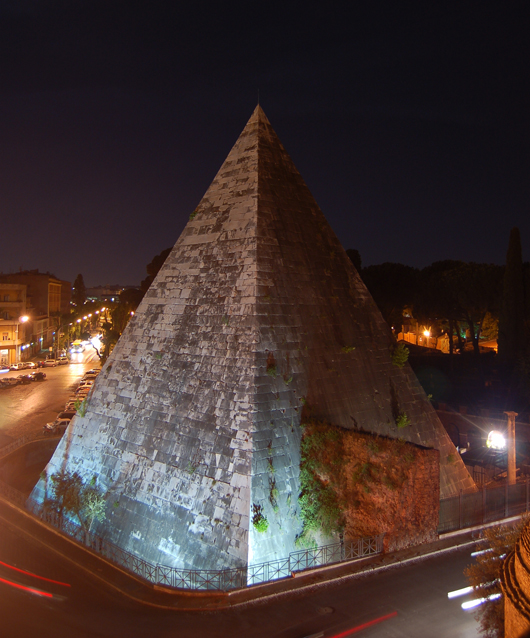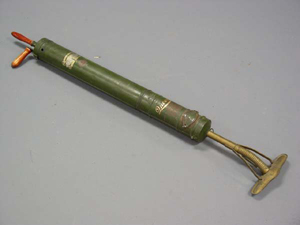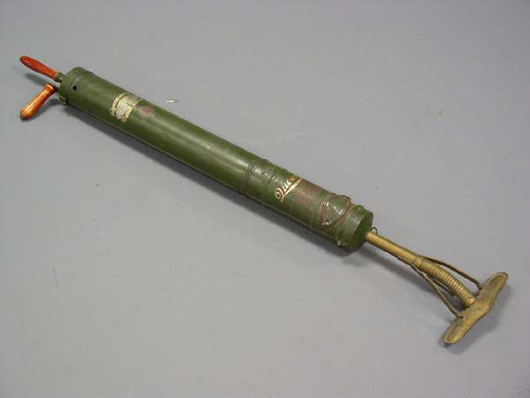
Duffner & Kimberly hanging chandelier, est. $6,000-$8,000. Image courtesy of Michaan’s. ALAMEDA, Calif. – Michaan’s Auctions 2012 estate sale premiere on Saturday, Jan. 7, will feature over 800 lots of property from estates and private collections. The sale is comprehensive, including Asian porcelains, ivory and jade carvings and Japanese lots, timepieces and gemstone jewelry, silver service pieces and Meissen porcelains.
LiveAuctioneers will provide Internet live bidding for the auction, which will begin at 10 a.m. Pacific.
Fine works of art include paintings, European sculptures, prints, etchings and original animation. The January Estate Auction will deviate from Michaan’s regular auction schedule this month only. The auction will be held at Michaan’s main gallery at 2751 Todd St. in Alameda, CA 94501.
The jewelry department features a cleverly designed Tiffany & Co. brooch among its January estate offerings. Lot 113 is uniquely fashioned as a pinned wasp specimen. The wasp’s head is formed from a 4.00mm pearl and the entire insect is accented by rose-cut diamonds, set in 14K yellow gold (est. $1,000-1,500).
A sale highlight from the Asian offerings is lot 261, a Chinese Famille Rose porcelain pillow. Largely used in opium dens, the opening allows items to be stored inside for safekeeping. The pillow for sale depicts beauties in vibrant garden scenes enjoying various leisure activities and displays an openwork motif upon one end (est. $350-550).
A beautiful example of American Art Nouveau leaded glasswork is seen in lot 557. The Duffner & Kimberly chandelier exhibits vine blooms in rich purple tones cascading down a subtly geometric background. The glasswork is set in a verdigris bronze patinated frame. Measuring approximately 26 1/2 inches in diameter and 9 inches in depth, the piece is highly collectible and substantial enough to illuminate an entire room (est. $6,000-8,000).
The fine art presentation includes a wide variety of artworks in the January sale, suitable to satisfy an assortment of buyers. Of note is lot 897, a classic and highly collectible John Taylor Arms etching of Amiens Cathedral gargoyles (est. $1,000-1,500) and a D.H. Chiparus bronze dancer sculpture in excellent condition (lot 817, est. $600-900). Michaan’s Auctions has also acquired a pair of Paul Cadmus etchings from a local private estate (lot 867, $600-1,000). Rounding out the sale is a quintessential view of Monterey’s Big Sur in a Joseph Bennett oil (lot 833, est. $800-1,200) and an original Hanna Barbera Yogi Bear published comic illustration (lot 920, est. $600-800).
Previews open at Michaan’s Auctions on Jan. 1 and continue on Jan. 6-7. For information visit Michaan’s website www.michaans.com or call 510-740-0220.
ADDITIONAL LOTS OF NOTE
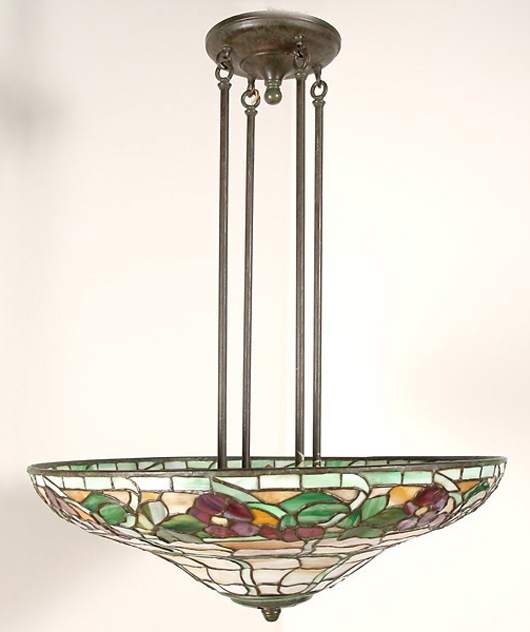
Duffner & Kimberly hanging chandelier, est. $6,000-$8,000. Image courtesy of Michaan’s. 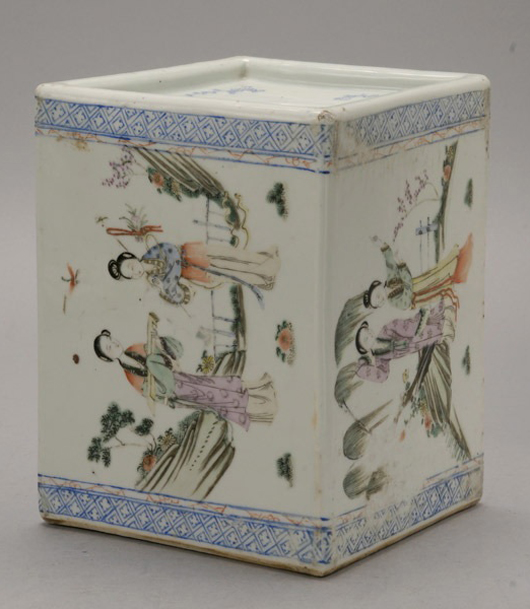
Famille Rose-enameled porcelain pillow. Estimate: $350-$550. Image courtesy of Michaan’s Auctions. 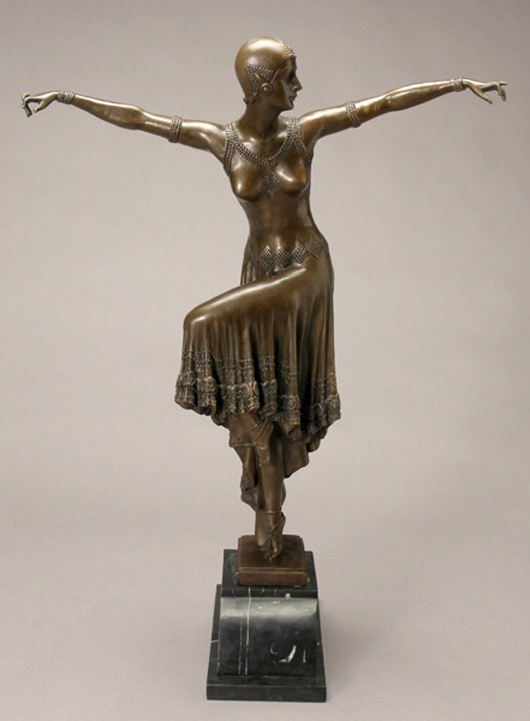
After Demeter H. Chiparus (Romanian 1888-1950), ‘Dancer,’ bronze sculpture, signed ‘D.H. Chiparus.’ Estimate: $600-$900. Image courtesy of Michaan’s Auctions. 
Conger Metcalf (American 1914-1998), ‘Boy Drawing,’ ink wash drawing. Estimate: $700-$1,000. Image courtesy of Michaan’s Auctions. 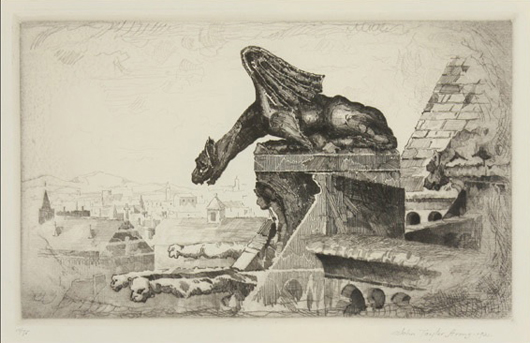
John Taylor Arms (American, 1887-1954), ‘Watching the Peoplw Below, Amiens Cathedral, 1921,’ Estimate: $1,000-$1,500. Image courtesy of Michaan’s Auctions. 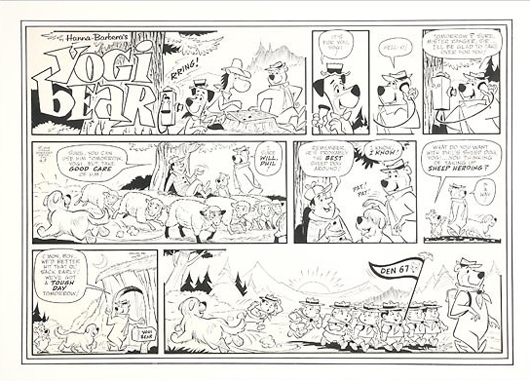
Hanna Barbera (American 20th Century), ‘Yogi Bear Sunday comic drawing, 1968, ink drawing on paper. Estimate: $600-$800. Image courtesy of Michaan’s Auctions.







